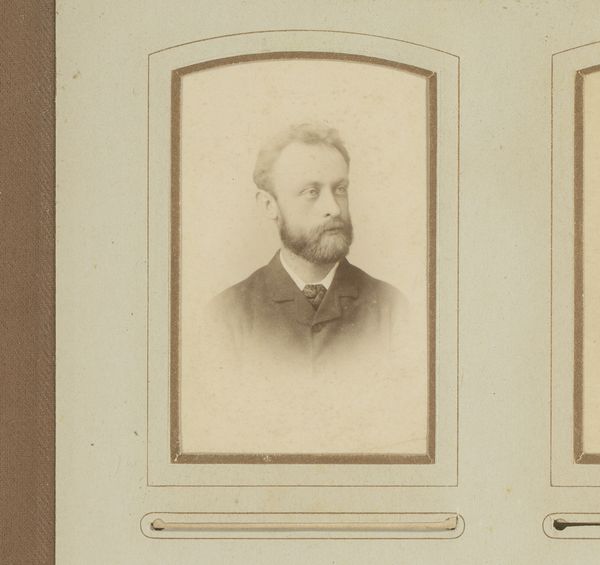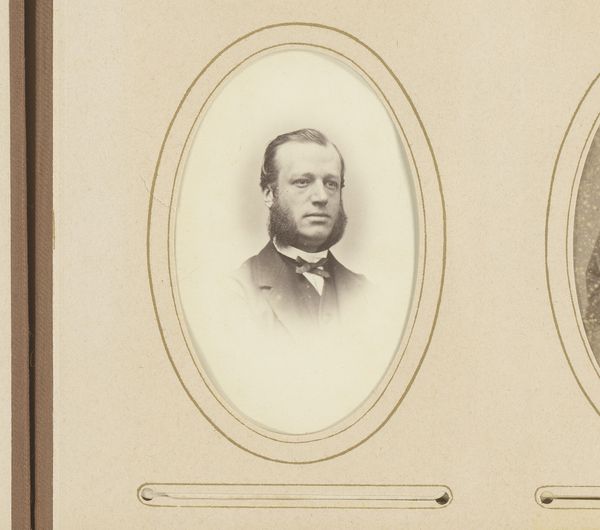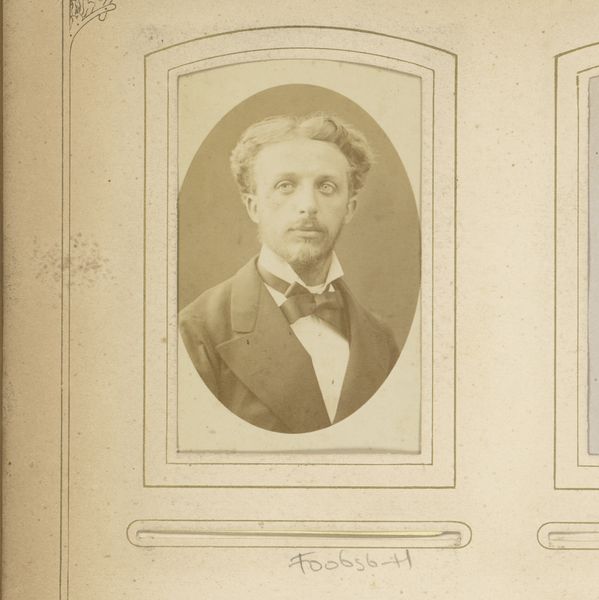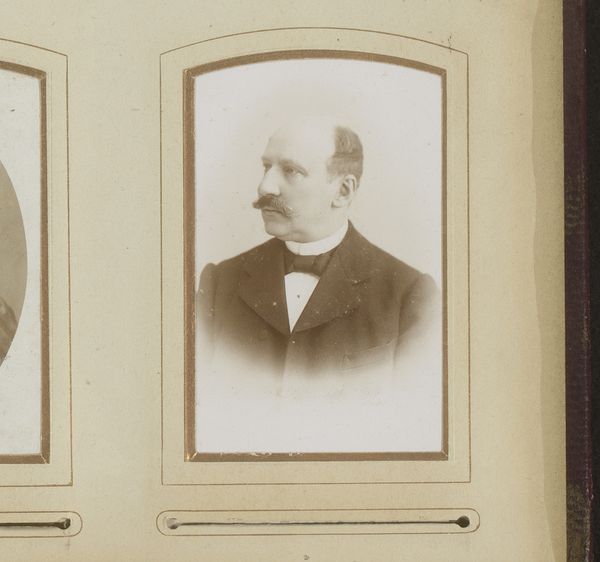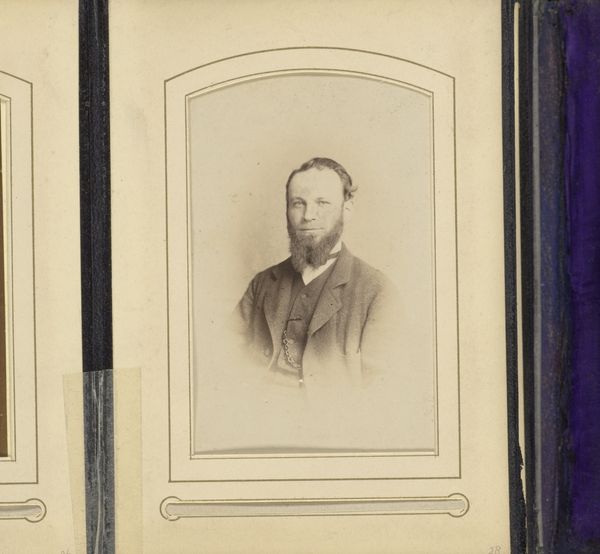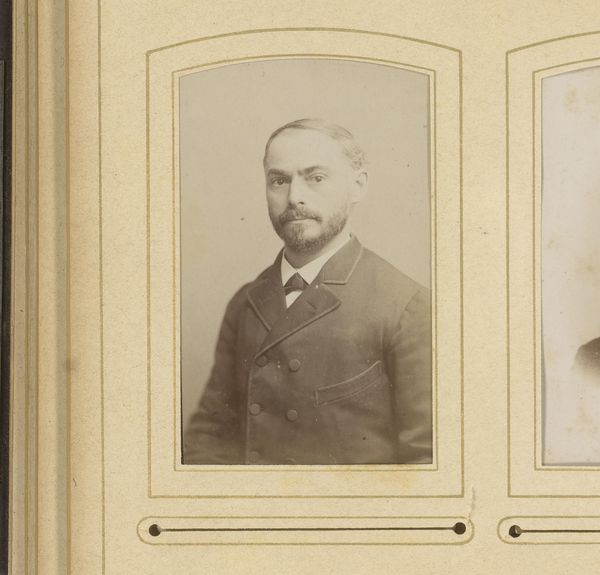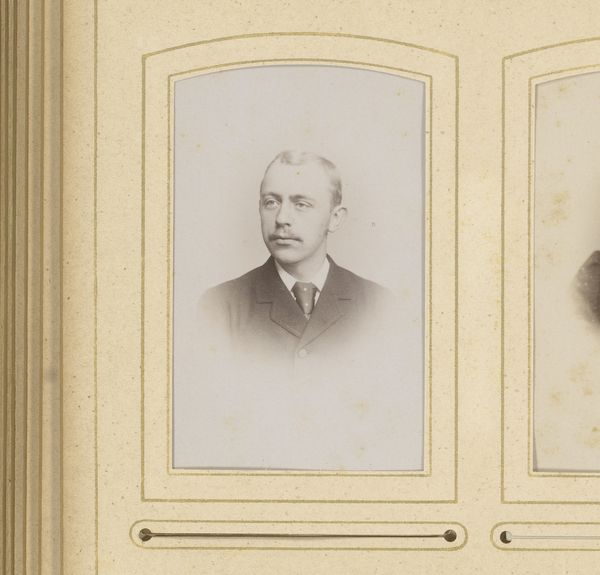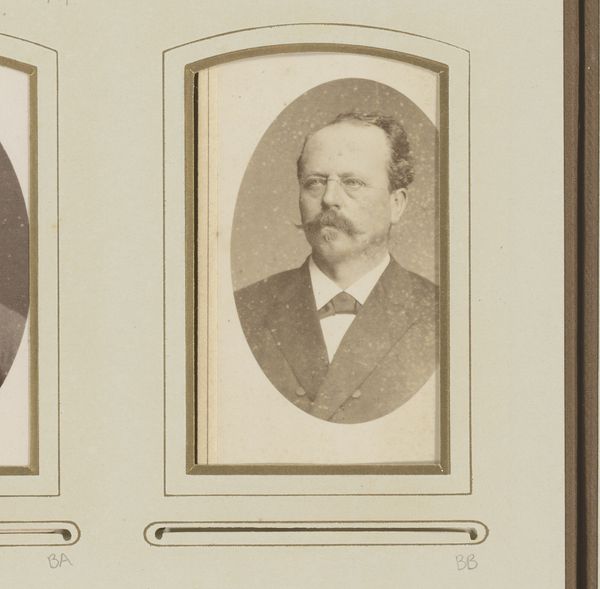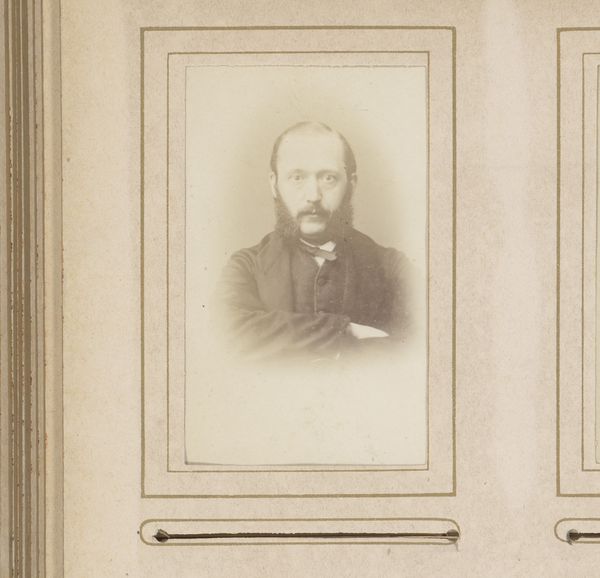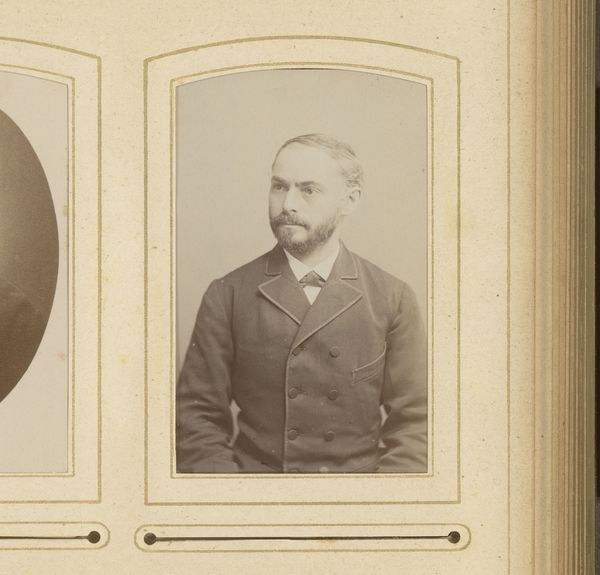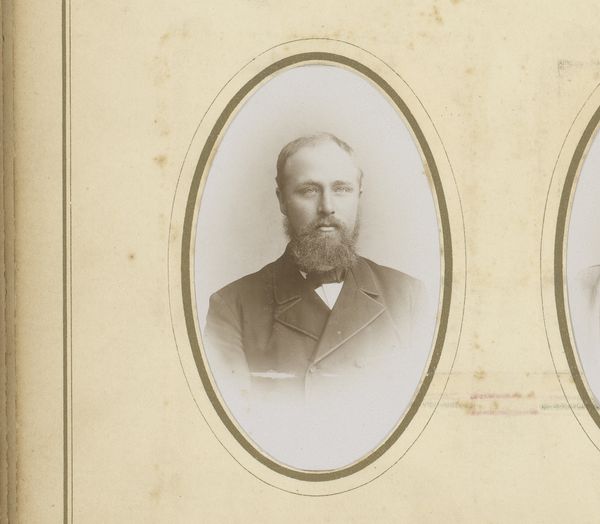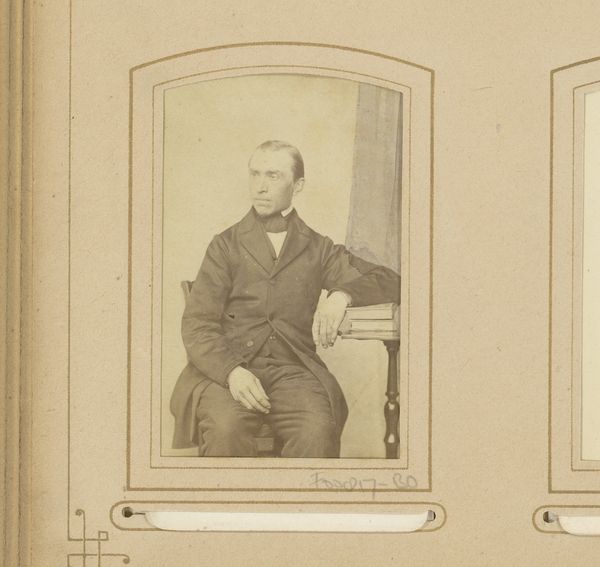
photography, gelatin-silver-print
#
portrait
#
photography
#
gelatin-silver-print
#
genre-painting
#
realism
Dimensions: height 83 mm, width 50 mm
Copyright: Rijks Museum: Open Domain
Curator: Looking at this gentleman, so formally posed, I can’t help but wonder about the role these photographic portraits played in solidifying social hierarchies. Editor: It's a classic representation of bourgeois values—stern, respectable. My immediate thought is of the gelatine silver print technique and the increasing industrialization of photographic materials in the late 19th century; its sharp, almost clinical quality feels markedly different from earlier photographic processes. Curator: Precisely. "Portret van een man met bakkebaarden," or "Portrait of a Man with Sideburns," attributed to Theodorus Diepenbach, likely between 1867 and 1877, offers a compelling case study of photographic portraiture's ascent during that period, when photographic studios flourished. This carte-de-visite format aided the normalization of picture production as social exchange. Editor: Yes, the physical qualities reinforce that sense. Gelatin-silver printing allowed for much greater consistency and ease of reproduction compared to, say, collodion. Also consider the albumen paper support used - these advancements enabled portraiture to be democratized and industrialized, affecting studios and their economics. Curator: And how that proliferation reshaped notions of the self and public image. These photographs moved beyond the domain of elite painted portraiture. Its mass production enabled access and documentation and a nascent culture of image dissemination. How did this shape identity or contribute to ideas around "celebrity?" Editor: An excellent point. It touches upon the societal relationship to materials themselves: mass produced, repeatable processes versus older crafted ones. The labor behind gelatin, the silver refining, even the specific chemical compounds—they speak to changing economies. Think of who controls their availability; even who labors in producing it matters! Curator: Absolutely! And the question of who could afford to participate in this burgeoning visual culture—who was depicted, and who wasn't—tells us much about social dynamics and evolving notions of status in late 19th-century Dutch society. Photography could democratize the image and also solidify social distinctions in new and more nuanced ways. Editor: So, considering the historical weight of imagery, contrasted with its production, hopefully, viewers recognize photography for its social context AND materiality. Curator: A dual approach lets us appreciate how societal forces converge to create potent cultural symbols.
Comments
No comments
Be the first to comment and join the conversation on the ultimate creative platform.
